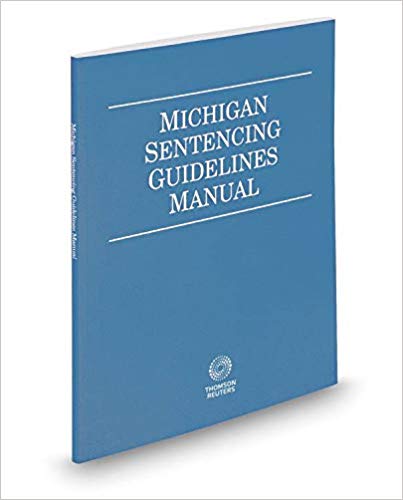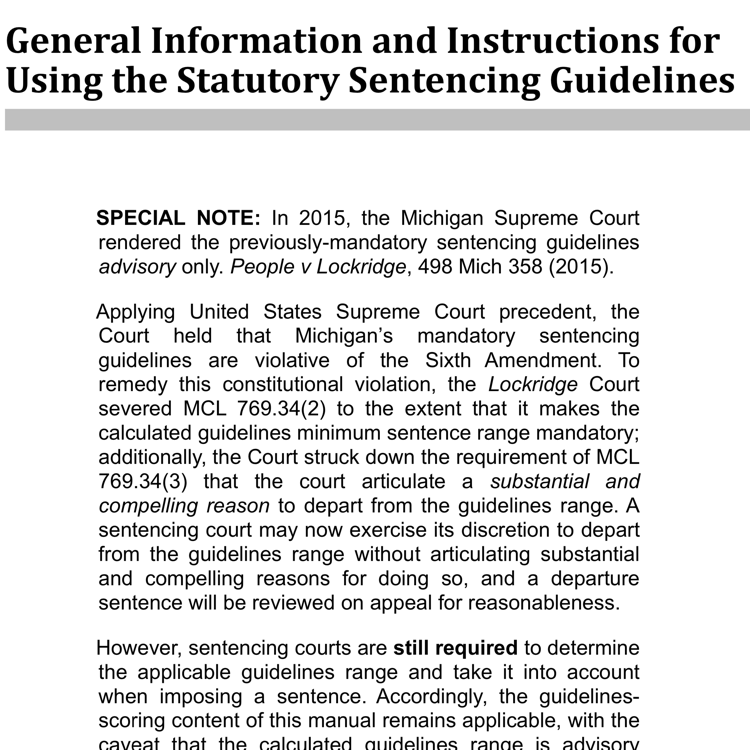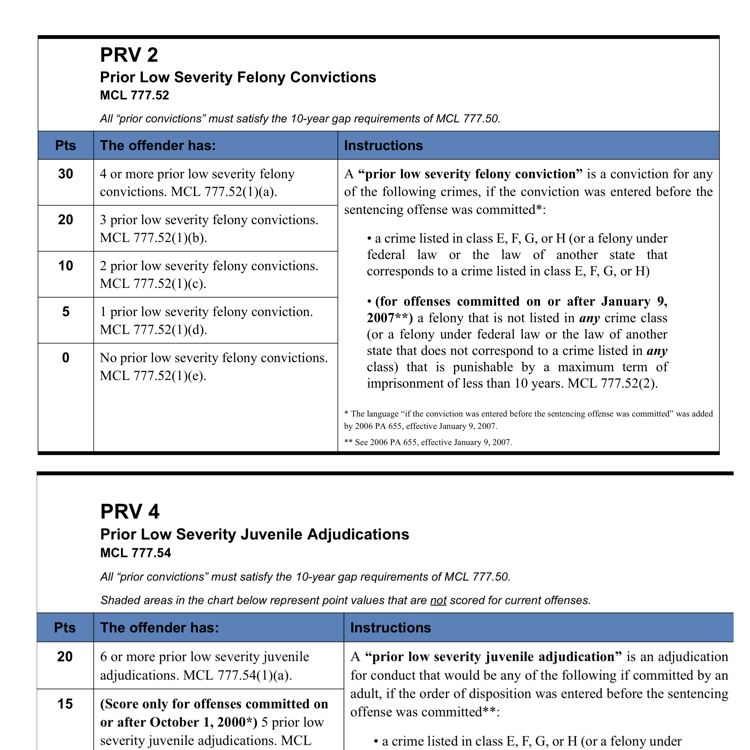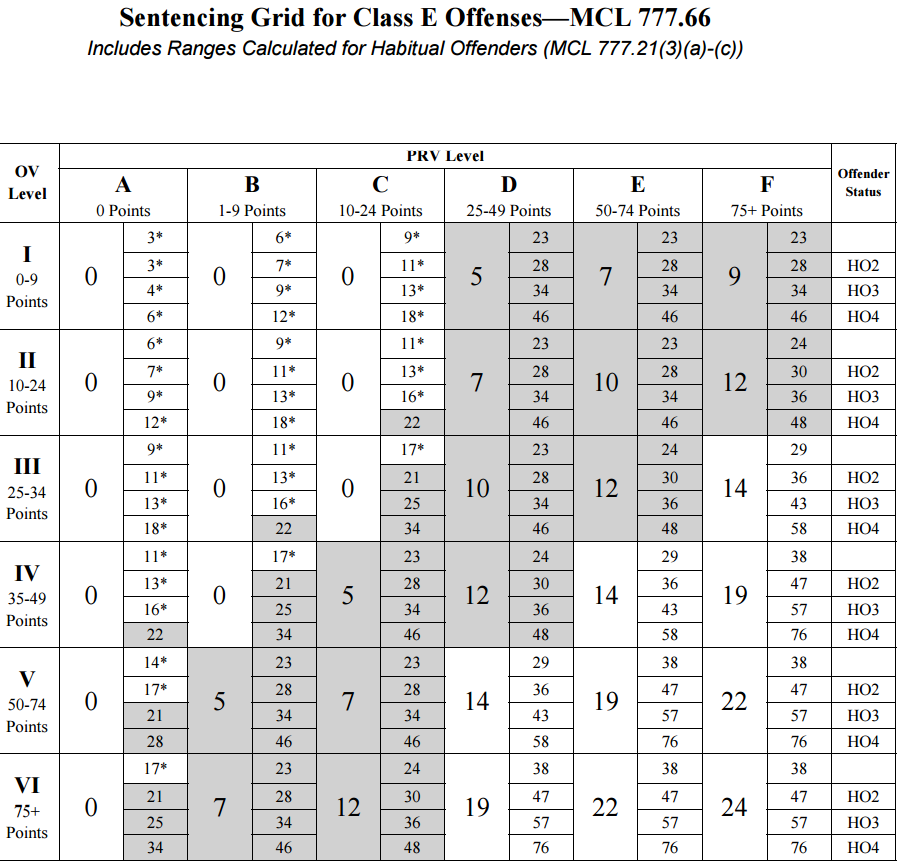Michigan Criminal Sentencing Guidelines
Michigan Sentencing Guidelines Determine whether You Go to Jail and How Long
Schmierlaw understands and can challenge the Guidelines
Schmierlaw understands and can challenge the Guidelines
The Michigan Sentencing Guidelines- A Short History
In late the late 1990’s, the Michigan legislature enacted the Michigan Sentencing Guidelines to provide judges with guidance or the minimum terms of a sentence for individuals convicted of a felony. The guidelines were developed so that any felony was based on the seriousness of the offense and the convicted person’s prior record. The goal was to reduce the differences in sentencing that often depended in which County the Court was located. For instance, the penalties for the same crime and a Defendant with the same criminal background, was different in Oakland County, Ingham County, and other Counties way up north
The sentencing guidelines score both the facts of the specific offense and the offender’s past criminal history. A minimum sentence range is then determined by placing these scores into various sentencing grids based on how the crime is classified. For instance is it or property crime or a crime against a person? Without putting a substantial and compelling reason on the record, judges were required to sentence a defendant to the sentence specified in the guidelines.
But in 2014, the Michigan Supreme Court ruled that, because the legislature and the court were two different but equal branches of government, the Court, according to the Constitution, had the sole power and right to impose a sentence, not the legislature. Since that case, Michigan v Lockridge, the sentencing guidelines are no longer mandatory but advisory but the Courts still usually follows them.
Why the Sentencing Guidelines were Adopted
All crimes come with minimum and maximum penalties. For instance, the penalties for Carrying a Concealed Weapon include fines and a possible 0 months to 60 months or 5 years in prison. So, in Macomb County a Defendant might be sentenced to probation with no jail time, while someone in another County, who done the same thing and with the same criminal history, might get 3 years in prison. The guidelines were adopted then, to try and standardize the sentencing throughout the State.

Download a Copy of the Michigan Sentencing Guidelines Manual
The State of Michigan prints and makes available an on-line, a copy of the Sentencing Guidelines. To use the manual, determine the crime classification, what sentencing grid corresponds to that classification, the OV and PRV points of each factor within that classification, and the result will appear on the associated grid. The guidelines also include what are considered straddle and intermediate cells which may allow the Judge to impose probation even though a jail term was specified under the guidelines. In addition, crimes older than 10 years and with no criminal history between the old and new crime, are not counted.
How the Sentencing Guidelines Work
Under the “advisory” sentencing guidelines, the Court will look at the current crime called the Offense Variable or OV and your PRV or Prior Record Variable. When considering the OV, the Court will look if a weapon was used, was anyone injured either physically or psychologically, how many victims there were, and other facts related to the crime for which you are being sentenced.
Your PRV looks at your past record. How many serious and no-so-serious felonies do you have? Any juvenile convictions? Misdemeanors. Points are assigned to each of these factors and these points correspond to a certain number of months or years that the person who is convicted will spend in jail.
Guidelines Instructions

Sentencing Factors

Sentencing Grid

At Schmierlaw, We Understand the Sentencing Guidelines
An experienced criminal defense attorney understands the sentencing guidelines and may be able to challenge the points that the Prosecutor has assigned to your particular case. Challenging these points when determining your guidelines could significantly reduce the prison or jail time you face.
If you are charged or arrested with a crime, you need an experienced, affordable, and aggressive criminal defense lawyer who understands the Michigan Sentencing Guidelines and can keep you out of jail and protect your freedom.
For the Best Criminal Defense Possible
Contact Schmierlaw for an Initial No-Cost Consultation
Contact Us for an Initial No-cost Consultation

Law Office of James G. Schmier, PLLC
2222 Attard Street, Birmingham, Michigan 48009
Tel: (248) 705-3742 FAX: (248) 540-0044 Email: jschmier@schmierlaw.com
